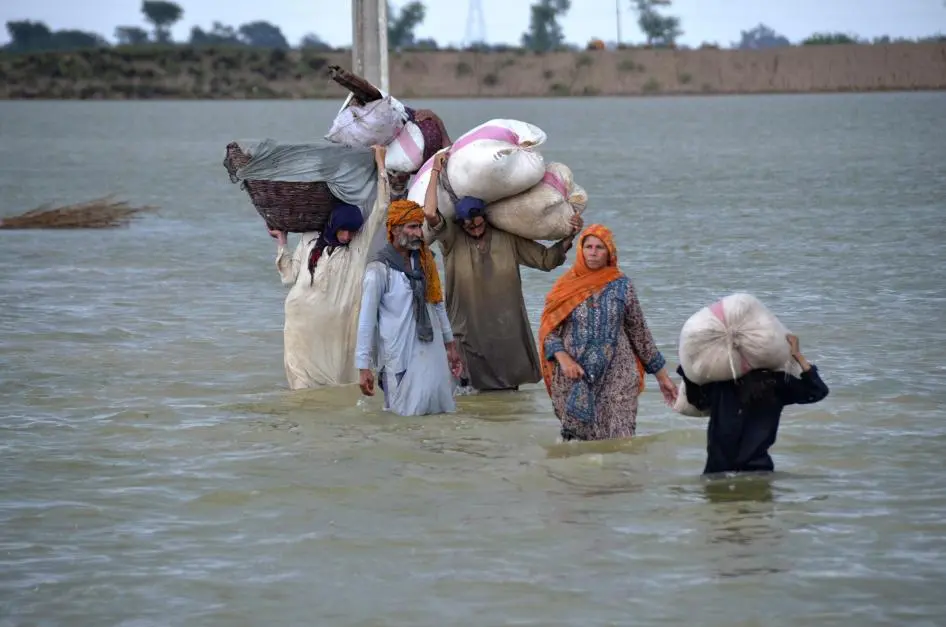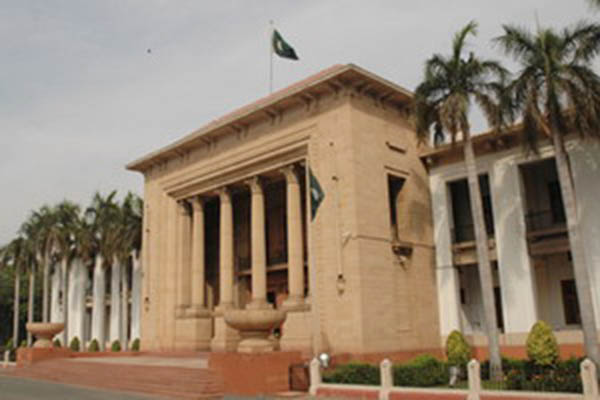Shazia Ramzan
Southern Punjab’s Flood Emergency: From Crisis Response to Resilient Futures Southern Punjab is again living through the dread of fast-rising rivers, collapsing embankments, and hurried midnight evacuations, a cycle now so familiar that it risks becoming the country’s grim monsoon routine. As Chenab crossed dangerous levels in Multan and floodwaters swept through Basti Gagran Kachor, Mirza Pur and Hasan Kachor, authorities rerouted heavy traffic via Vehari and Khanewal while families scrambled for safety. The Punjab Disaster Management Authority (PDMA) ordered urgent evacuations across Muzaffargarh, Lodhran, Rajanpur, Liaqatpur and Rahim Yar Khan, warning riverbed residents to move without delay. What we are witnessing is not an isolated emergency but a systemic failure of land-use regulation, early warning coordination and local governance that leaves citizens exposed year after year.
Karachi’s inundation after a third straight day of heavy rain underscores that Pakistan’s flood risk is both rural and urban. Stormwater overwhelmed low-lying neighbourhoods, rescue teams ferried the stranded to safety, and yet the city’s core weakness remained unaddressed: encroachments on natural drains, inadequate pumping capacity, and a fragmented municipal command structure. When hydrology meets unplanned growth, water will reclaim its pathways; the choice before policymakers is whether to anticipate that physics with design, or face it repeatedly with boats and sandbags.
Across the southern belt, pressure mounted on Sher Shah Barrage and dikes near Head Muhammadwala, with a controlled breach under consideration to protect critical infrastructure. Such measures are sometimes unavoidable, but they are also confessions of planning deficits upstream and on the floodplains. If executed, more than 8,000 homes and some 30,000 people could be directly affected—an unacceptable price when zoning, setback enforcement and resilient relocation could have reduced exposure years ago. Meanwhile, releases from India into the Sutlej intensified flows at Harike and Ferozepur, a reminder that transboundary hydrology demands data sharing and trust even when politics is brittle.
At Head Panjnad, “extremely high flood” discharge—around 530,000 cusecs—triggered a full emergency posture across water and power agencies. In Muzaffargarh alone, 138 villages were submerged, affecting over 135,000 people; Rangpur reported another 50,000 displaced after 28 villages went under. In Lodhran, breaches swamped communities; in Alipur, eight people were swept away, with multiple fatalities and missing persons. Bahawalpur officials counted 150,000 residents affected in 98 locations; downstream, a fresh surge from Head Trimmu threatened Jalalpur Pirwala. These numbers are bleak, but they are also precise—and precision is the first step to accountability.
Relief is racing to keep pace. More than 300 boats, 400 inflatable rafts and thousands of life jackets have been deployed in Multan, Muzaffargarh, Bahawalpur, Lodhran and Rahim Yar Khan; the army and Rescue 1122 are working to plug breaches and move people and livestock. Yet relief cannot substitute for preparedness. The PDMA reports 2.1 million people displaced across Punjab this monsoon and nearly two million acres of farmland submerged, with cotton, maize and sesame wiped out in multiple districts. Without crop insurance, resilient seed banks on high ground, and protected evacuation corridors for livestock, rural households will continue to re-enter poverty traps after every flood.
Public health pressures are cresting. Over 158,000 flood-affected people have presented with respiratory infections, skin ailments, diarrhoea, and eye infections; snakebites and dog bites add to the burden. In Arifwala, stagnant water is fuelling waterborne disease clusters. Mobile clinics, chlorination units, ORS stocks, tetanus and rabies prophylaxis and vector control must be pre-positioned—not improvised—before the first downpour. Disaster management begins months before landfall, with health supply chains mapped to taluka and tehsil levels and community volunteers trained to operate early-warning, first aid and surveillance protocols.
Sindh is now bracing as the Indus, Sutlej and Chenab continue to rise. At Guddu Barrage, flows crossed 500,000 cusecs with warnings of a higher surge within hours; Sukkur opened all gates as upstream volumes exceeded 440,000 cusecs. Villages in Bhawana, Ahmedpur Sial, Uch Sharif and Kabirwala remain cut off, pleading for rescue. The National Disaster Management Authority’s nationwide death toll—nearly a thousand lives lost—should be treated as a baseline for reform, not a ledger entry to be forgotten when waters recede. A resilient future requires institutional memory, not annual amnesia.
Republic Policy WhatsApp Channel
The path forward is clear if the state is willing to act where it has hesitated. First, empower local governments as the constitutional frontline of risk reduction. District and municipal setups must control budgets for embankment maintenance, desilting, drain rehabilitation and shelter operations; Article 140-A must be honoured in practice. Second, institutionalise technology: integrate satellite rainfall estimates, river-basin hydrologic models, radar nowcasting and AI-based inundation mapping into a shared, open dashboard that PDMA, WAPDA, irrigation departments and district control rooms can access in real time. Third, restore the rights of rivers by enforcing floodplain zoning. A no-build ribbon along riverbanks, relocation of high-risk katcha settlements to elevated, serviced sites, and legal penalties for encroachment will save more lives than any number of last-minute evacuations. Fourth, design for living with water: elevate critical roads and schools above historical high-water marks, construct multipurpose community shelters that double as schools or clinics, and promote stilted or plinth-raised housing with flood-resilient materials. Fifth, secure livelihoods and health with climate-smart agriculture, index-based crop insurance, protected fodder depots, and pre-arranged veterinary and medical outreach. Finally, pursue pragmatic hydrodiplomacy: transparent, time-stamped cross-border data on flows and releases can transform hours of uncertainty into hours of life-saving preparation.
Ultimately, southern Punjab’s flood emergency is a test of governance more than of nature. Rivers will always rise, and climate volatility will amplify extremes, but human systems can choose to anticipate rather than react. When local governments are empowered, technology is mainstreamed, riverbeds are managed as living systems, and communities are equipped to coexist with seasonal inundation, the narrative shifts—from calamity to competence, from displacement to dignity. Pakistan must build that future deliberately, beginning now, before the next surge on the gauge turns today’s warnings into tomorrow’s losses.














